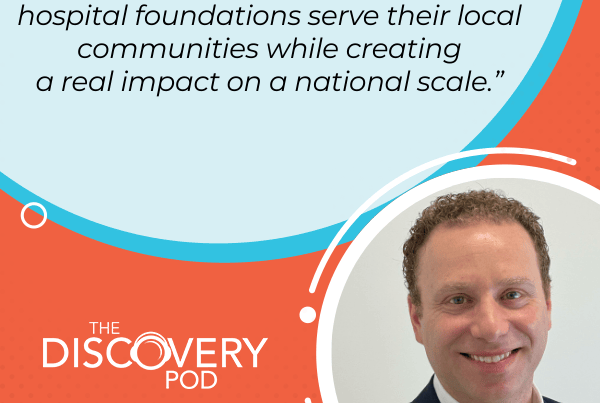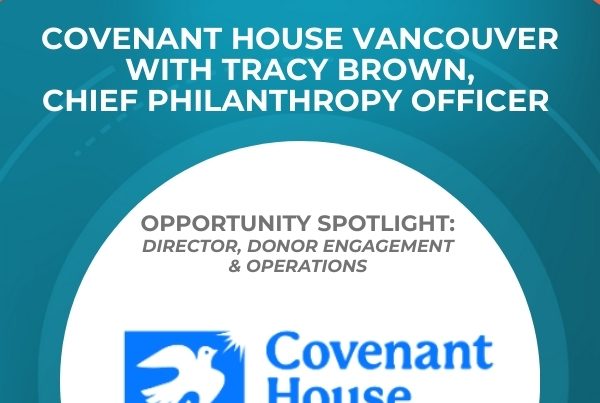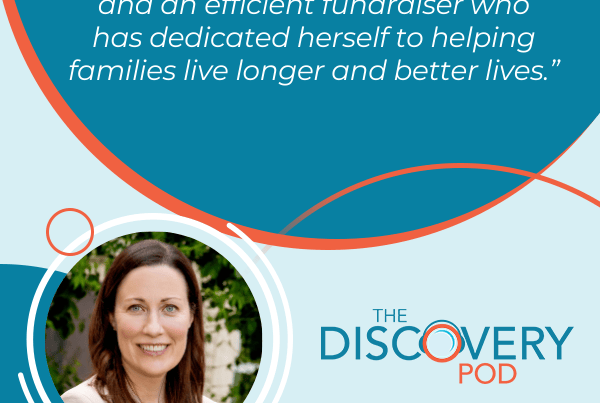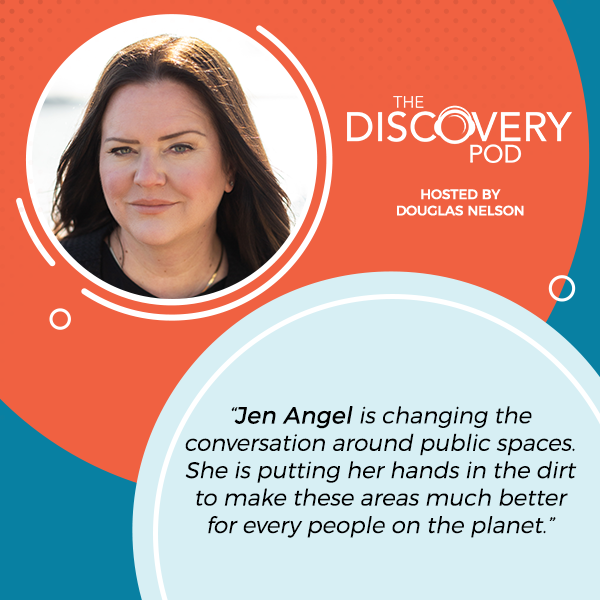
People often come together in public spaces, and Jen Angel ensures that these areas are functioning at their utmost best to foster healthy, long-lasting connections. In this conversation, Douglas Nelson sits down with the CEO of Evergreen Canada as she shares their mission of building spaces centered on community building, social interaction, and diversity. Jen talks about the necessary leadership approach to get everyone on common ground and rowing in the same direction. She also discusses how public spaces can reach the fullest potential by making everyone feel welcomed and inspired.
—
Listen to the podcast here
Evergreen With Jen Angel, CEO
Welcome to the show, conversations with social profit leaders. My guest is a special one. Jen Angel is a builder of community, momentum, and places people love. As CEO of Evergreen, she works with public, private, and community partners to build better public spaces. In our conversation, she talks about the power of convening, the power of building community for community, and what it takes to get everyone rowing in the same direction. Jen shares great questions leaders should ask themselves and, in a humorous way, talks about some of the challenges and learning she’s had as a CEO for so many years. Please enjoy this tremendous conversation with Jen Angel.
—
Welcome to the show, Jen.
It’s such a pleasure to be here. Thank you.
Jen Angel Of Evergreen
Jen, I am so looking forward to this conversation and learning about your organization. I have been so excited to see the work you’re doing, and I think it is really important, and certainly in an environment that is changing, and the conversation around your organization is changing. As we get started, tell us and our readers a little bit about Evergreen and the work that you do.
Thank you. Evergreen is a national charity. Our work fundamentally is about building better public spaces, recognizing that great public spaces can work hard for people, for individuals, for our community, and also for the planet. We’re thinking about and actively putting our hands in the dirt to build better public spaces for people on the planet.
You’ve got some really impressive programs and a long-running history. Talk a little bit about The Centre for Better Public Spaces.
Evergreen’s been in this work in one way or another for more than 30 years. We began working to green cities more than 30 years ago, in particular Toronto, where our home base is located. Over time, we’ve been involved in all sorts of other dimensions of building better cities, supporting federal programs in housing supply, and supporting programs around smart cities. We’ve always been rooted in this idea that great public spaces can multi-solve and they have an outsized benefit.
It’s where our bona fides lie. It’s what we do best. Evergreen demonstrates what great public spaces can be and do and how they can work hard for people on the planet through Evergreen Brick Works, which is our home base located in Toronto, a gateway to the ravines, the largest urban ravine system in the world, in the most diverse city in the world.
There, we host farmers’ markets with more than a hundred businesses. We host a number of really important community conversations around building better cities. We host thousands of events, with hundreds of thousands of community members. We demonstrate nature-based solutions for climate adaptation and mitigation, as well as climate technology and construction technology. It’s really a best-in-class example of what intentional public spaces can do.
The second part of our strategy is really about supporting others to build better public spaces in their communities. The Centre for Better Public Spaces, which is just rolling out now, it’s a new container for our national work. Here we convene experts and resources, passive resources that project leads can draw upon, and also very active and bespoke expertise and support an individual project leader might need to realize their project in their community across the country.
Using Public Spaces To Address Loneliness
One of the issues we’ve heard from other guests who have been on the show over the last couple of years is the epidemic of loneliness. Whether it’s mental health or social connection organizations, newcomers to Canada organizations wanting to connect people better. Evergreen is an example of how to do that better. How is your organization approaching the role of the individual in those public spaces that you’re helping to curate and to provide?
I think you’re absolutely right to frame it as an epidemic, and the research is showing, and there’s a growing pile of it, that we’re lonelier than ever. That can be attributed to lots of different things, not least of which is the amount of time we’re spending online, indoors as opposed to outdoors. Kids in particular, there are some really alarming stats. Seven hours a day on their devices, less than 30 minutes outdoors.
There have been some policy-related efforts to mitigate that issue, including taking away phones in school. We’re really thinking about how to make the proposition of going outside to play more compelling than what a kid or an adult might find online. In order to create places that are compelling enough that that’s what folks choose to spend their time engaging in. We think about how to make them places for everybody.
We’re thinking about who’s not showing up and what might they need? How are we ensuring that we’re designing these landscapes with a variety of programming all year long, day and night? How are we ensuring that the variety of programming we’re providing appeals to different ages and abilities? The best way we know how to build a program that people see themselves in is by building it with the community. The Brick Works and indeed all of the public spaces that we engage in. We think of it as a canvas or a stage.
Evergreen isn’t the main event. We’re the conveners of folks from the community, from philanthropy and businesses, and government, in that they’re the stewards of the places. These are public spaces that we’re involved in, and trying to bring us together in a common purpose around creating spaces that both work hard for multiple public policy objectives, but are also irresistible to people. No matter what your interests or background, there’s something there for you, and it’s compelling enough that you want to engage with it.
How Evergreen Takes On A Project
You used a phrase earlier that I really like that multi-solving, so addressing many issues with single action and creating these public spaces. For readers who are in organizations that are connecting to the community and trying to better reflect the community that they serve, maybe talk a little bit about how Evergreen decides to get involved in something. How do you take on a project? How do you decide when, where, and who to convene?
I’ll unpack that in a couple of ways. The reason we have moved to launch The Centre for Better Public Spaces is to have a one-stop shop for folks, and they might be private sector. They might be community-based, it could also be local governments to go to find resources that can support their projects to help them navigate some of the barriers that exist in public space work. There’s an intake process.
There are criteria against which we evaluate projects. We’re particularly interested, as you said, in projects that can solve multiple priorities at the same time. We’re thinking about climate in particular, health and well-being, strengthening local communities, both as climate action and also, as you already talked about, for the purposes of improving the opportunity for joy in community, the opportunity to come together and build trust, which leads to resilience.
Connecting kids with nature and everybody else outside to play. Where there are projects that can do all of those things, we’re definitely interested. Where there are projects that get at only a few of those things, we’re challenging folks to think about their projects and how they can solve for more than one outcome. We’re both celebrating the ones and supporting the ones that do multiple things, and also challenging the ones that don’t to make them work harder for more people and for the planet.
Measure Of Success In Bringing People Together
Through our work here at the discovery group, we’ve had the opportunity to work with a number of community foundations that are trying to address this issue of loneliness or social cohesion and trying to grapple with what does it mean to be a convener. How do you know you’ve been successful, that it’s worked? When you’ve successfully brought people together, what’s the measure of success? How do you think about that measure of success when you bring groups together, whether it is that full, multi-solving spectrum, or you’re looking to add pieces to the puzzle to complete the picture?
As I mentioned, we’re looking at who’s showing up at our events or on site more passively. We’re looking at who’s not there and then doing outreach to understand how we can connect with that community’s needs and aspirations. Jane Jacobs said to build places for everybody, you have to build them with everybody, and that sounds impossible. It’s fundamental to building great public spaces. If you can attract people to participate in building the place and not just through planning meetings, but indeed through direct programming contributions or as volunteers, people feel a sense of ownership, and that leads to stewardship.

Public Spaces: Through direct programming contributions, people feel a sense of ownership which leads to stewardship.
At the Brick Works, we’ve benefited from, I think we had 7,000 hours of volunteer contribution last year. These extraordinary volunteers are community members who found a place of belonging in the Brick Works. They do everything from welcome visitors at our welcome desk to run tours. They participate in our markets. They bring a pile of value and unique expertise to the offering, and we couldn’t do it without them. That’s because they feel like the place belongs to them, that they’re so deeply committed to the work.
You’ve touched on something I think is important. The number of volunteer hours, the number of volunteers in Canada have been going down, and really haven’t come back up very much since the end of the time of the virus. The organizations that are successful, one of the common themes that I’ve heard leaders talking about is that sense of ownership that the volunteers have.
It’s not that the volunteers come to do you a favor, you Evergreen or you the organization a favor. They come because the organization is the vehicle or is the mechanism through which they achieve their purpose, or they add value to the community that they care about. That sense of stewardship of volunteers rather than ownership of volunteers. It goes a long way to addressing that crisis of volunteerism.
I think that’s very well said, and it’s absolutely true. To understand your relative success in doing that, I think consistent, deep engagement of volunteers, like participation over time, archymetrics, but also we regularly talk to our volunteers to understand and imagine what is exciting about this. How might you become even more deeply engaged? What ideas do you have for improving this place to engage more people or people more deeply? That is a gift that insights and diverse perspectives are a gift, and it helps us strengthen the places that we steward.
What do you do when you hear an idea or a concept or a direction that you’re like, “We cannot do that.” How do you manage?
It’s an important question in the broad context of public engagement around projects and also in a micro context, as in our operation of the Brick Works. I think that because you cannot do a thing doesn’t mean there isn’t value in exploring ideas. I think a lot of folks are reluctant to do public engagement because they don’t want to get hollered at, and people don’t agree on everything, and this stuff.
What a boring place it would be if we all agreed on everything. Our perspective is that in every interaction or almost every interaction, as long as it’s respectful, there’s some nugget of insight that is worth considering. Our job is to be clear about what’s fixed and what’s movable. There are all sorts of reasons for something to be fixed. Maybe it’s permissions or maybe it’s budget or what have you, but there’s a pile of room for freestyling and creativity within those boundaries.
If you can be clear on what’s fixed and sincerely listen to what’s not and the variety of points of view, our job is to weave those together in something that doesn’t mean that everybody gets what they want. It shows that everybody has been heard, and it gives a clear rationale as to why we’ve made the decisions we have and how their input has shaped those decisions. That’s what a lot of people are really looking for. They want to be heard. Public spaces have to be good. They have to serve as a platform for people to engage, whether they’re engaging in a celebration or even a difficult conversation about their goals and aspirations for a community.
Public spaces have to serve as a platform for people to engage either in a celebration or a difficult conversation. Share on XThere’s been lots of work done recently around the role of public libraries and what that is for the community. Public libraries are one of my favorite things to go visit when I go to a city, just to see what it looks like. There’s been some beautiful architecture. That’s happened in Canada over the last number of years. When you go into a library, you see the community and the number of services that are happening, the supports that are being provided, and the respite that’s being provided for some individuals.
Handling Disagreements In Community Engagement
To me, that looks like a community that’s in a positive way, which doesn’t mean it’s easy to run a public library. In fact, it probably makes it much harder to do that. There are some great examples across the country that we can point to. I’m sure you have a lot, but I want to ask around community engagement. One of the things that we often hear when we’re working with clients is that we have this part of the community, this group, this collection of individuals that always say no.
We want to design a process where everybody else says yes and they’re the only one saying no so that we can do what we want to do. That’s not how they describe it. They want to win the contest with a group that is saying no. We’ve had the chance to work with a number of very unbeaten, very good leaders, great organizations with strong board leadership. We’re saying, “We need to get underneath and find out why they’re saying no.”
They always say no. Why did they say no? There’s often not a great, they’re just that way. Why are they that way? Getting under that why is what I’ve seen is a lot of that resistance to changes particularly in public space or in public service, the provision of public service, is the limited power that people have is in saying no, because they don’t feel like they have the power to say yes to something, to make a change. Our organizations and sometimes our institutions put people in position where their only option is, the only agency they have is to resist.
A lot of what you’ve described and what I’ve learned about Evergreen over the last little while is really about getting underneath that and giving people a voice in that positive change. What advice would you have or what learnings have you had for other leaders who are looking at some form of community engagement, where there may be some or perception of entrenched groups against what they’re trying to move forward?
I’d answer that in a couple of ways. The first, I’d say, is that we often talk about this like what we build matters, and it has an impact, and we’ve already talked about that a little bit. How we build it matters at least as much as what we build. We need to get a lot better as a community, maybe as a society at disagreeing and still remaining friends. I think that when you approach a public engagement, again, not as an exercise in driving to consensus, because that’s not often a realistic goal, but as an exercise in building a space where people feel that they’re being heard.
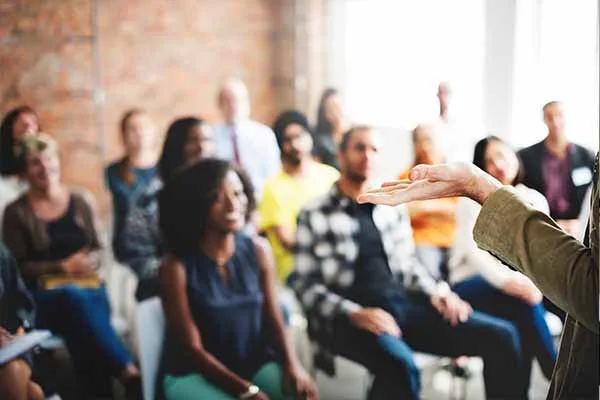
Public Spaces: If we want to build something that matters, we need to get a lot better as a community in disagreeing and still remaining friends.
A trust that you’re engaging them with an intention to hear them in service of building a better plan. I think right out of the gate, that can take down some of the temperature in the room. One of the things Evergreen, and I would say the social impact sector, the not-for-profit sector has as an asset or a tool in their toolbox, maybe that is quite beneficial in the context of public engagement around any topic is that we’re like, a lot of people are distrustful of government, right or wrong. A lot because they see it as political and election-focused.
A lot of people are distrustful of corporations because they think they’re purely profit-driven. That may or may not be true is and is not true depending on the particular company. They’re of course all profit-driven, but there’s also a lot of great partner organizations, corporations that we work with, who are also very community-minded. What the not-for-profit sector can often flex in is that there’s a baseline community trust that we’re in it for the community, like that we are trying to get at the best thing for the community.
Doesn’t mean it’s the best possible outcome for every individual, but that we’re here to hear them, to digest and give thoughtful consideration to what they’re saying. Try to weave something that has all of those inputs in mind in service of what’s best for the collective. I would also just add. In my experience, and I’ve done a pile of community engagement, both in as representing government, I used to work in a crown corporation environment, and also now in the sector, like candor and sincerity, straightforwardness goes a really long way.
Who would have guessed being human?
That’s an important piece of advice for leaders. Set up what’s fixed and what’s on the table for discussion. Set the context that we’re not all going to agree, but we’ll be candid. If we can find each other on the same side of the table, working against the problem to be solved rather than back and forth on a particular issue. It’s a good frame for a productive conversation. It also doesn’t mean that they’ll always go well, and sometimes they go badly, and that’s also good insight into the community. What needs to happen to create the conditions that we can come together around an issue?
We can work on the same side of the table against a problem even if we have disagreements on various things. Share on XI really like that. It reminds me of a conversation I had with a client a couple of years ago, and her realization after one of those engagements that maybe didn’t go quite as well or had gone badly. She goes I think we made the mistake of confusing convening with consensus.
I think that’s well said.
Just because you brought everything together or everyone together doesn’t mean we’re all going to agree. In your earlier comments, you were talking about it’s what is best for that total picture, the total community, but you need to hear from everyone to be able to make those estimations to make those decisions.
I would I would also add. Oftentimes, particularly the passionate points of view that can sometimes suck the oxygen out of the room in these contexts. It’s often rooted in a fear of change. Being able to acknowledge that fear of change and also clearly articulate how any proposed solution might bring some benefit through the change, as well as just the change itself, is important too.
When I think about, for example, the housing density we need in cities, and folks who are supportive of more housing in cities, as long as it’s not on their street. There’s a real fear of like the thing I’m used to and love is going to change. Is there going to be more traffic? Is it going to affect the value of my home, which, for many people, those who have the privilege to own a home is a key source of their personal wealth? They’re often real tangible issues that people are expressing, and it may not come out that way.
If you can unpack that a little bit and also show the incremental benefits of the change, I think you can take people by the hand and walk them through the change. Not changing is not an option at this moment. We cannot solve the problems before us without doing things differently than we’ve done before. Getting people comfortable with that dynamism and in that change is a key objective of bringing people together.
Making people comfortable with dynamism and change is the objective of bringing people together. Share on XGetting Into The Social Profit Sector
It’s often attributed to an Italian proverb, but if we want things to stay the same, we’re going to have to change a lot of things around here. You mentioned you’d been with the Crown Corporation, and now you’re here in our social profit sector. What did you notice in making that change? What brought you to the sector in the first place?
That’s a really good question. I would say the work is not dissimilar. For a good chunk of my career, I’ve been involved in public infrastructure and, in particular, public spaces, and in particular, bringing private capital, private investment, and community interests together with public spaces. I was doing that work in a Crown Corporation environment with a private sector board. Now I’m doing it in a not-for-profit sector. I would say my view is that there is a lot of room for innovation in the sector.
There’s more risk tolerance, which might seem counterintuitive, given the challenging financial environment we’re in. I think that’s always a risk in this sector, certainly versus government. There’s a risk tolerance. There’s a desire to try things in a way that I didn’t see in government, maybe not to the extent, anyway, that I would have liked to have seen because of the political framing in government. It’s difficult to build a risk tolerance for failure.
That’s fundamental to innovation. I think in this sector, we’re a little bit scrappier. We can move faster. Our board, as a number of private sector and community leaders, is invested and involved in our organization because they believe in the change it can drive. I think it’s the risk environment, and that is a critical precondition of innovation. Innovation is what is our mission we are on. It’s a different approach to public spaces that we think can have all sorts of beneficial outcomes.
I really appreciate that background. I’m curious, more risk columns, more open to risk. Is there a difference in presenting an opportunity that involves risk or discussing the risk of a particular project with a volunteer not-for-profit board than with the private sector crown board? Are they asking different kinds of questions?
No. Not really. The shareholder of the Crown is the government. The so-called shareholder of our organization is really the community. An innovation doesn’t have to be a big, fancy thing. It’s like new ways of doing things that are valued. We actively work to create the conditions for curiosity and learning, and diverse people coming together in ways that meeting people you may not otherwise meet.
We host tons of mission-aligned events, and that is like gatherings, and they’re sometimes private sector-led, and they’re sometimes community sector-led, and even government conversations, and many cross all three sectors about doing things differently, building cities differently. It’s that condition that when a public space is done well, it can be uniquely created there. It’s not the regular people you meet at the dinner party or in the backyard barbecue, it’s people you wouldn’t otherwise meet. By being collected into one place together, it’s a really interesting meeting of different ideas and experiences, and exciting things come from that.
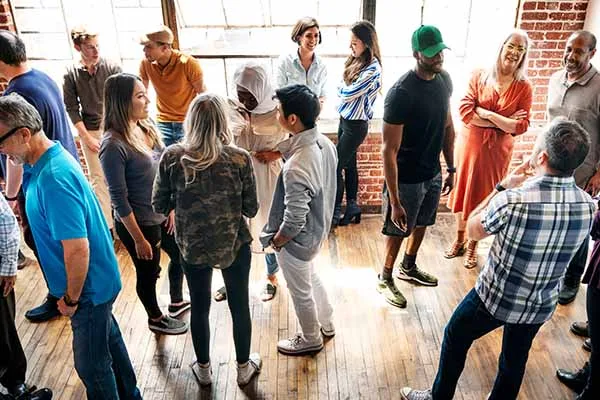
Public Spaces: When a public space is done well, you will meet people you would not otherwise meet.
Exciting Future Of Public Spaces
As we come to the end of our conversation, I get to ask my favorite question. Jen, what are you looking forward to?
It is a dynamic time.
No matter the gap between when we record this and when we play it, I’m pretty sure that’s going to be true.
I posted something on LinkedIn about our Earth Month program, which is amazing. You should check it out if you’re interested in Earth Month programming in Toronto to Toronto. In this post, I was looking for an adjective to describe the time we are in, and I left insert adjective because there just wasn’t the right one to meet the moment.
Let me say this. In my particular work, there is a growing pile of evidence that public spaces have an outsized impact, but they remain underinvested and underprioritized. I see that changing. Particularly in a context of scarce public budgets, we ought to be prioritizing projects that can solve for more than one outcome at the same time. We ought to be building the places we share in a way that shapes the lives we want to lead, in the way we relate to nature. The built environment shapes how we live, how we play, how we move, like who gets to participate.
It has a real, outsized impact. I’m feeling very bullish that the value of public spaces is being recognized. I’m also excited to see investment coming from non-traditional places into public spaces. We need more of that because public budgets are anemic. They’re barely getting at repairing the stuff they have, let alone building the new. I love this and I’m excited by this coming together of folks from government, from industry, from community, and working in common purpose with our hands in the dirt in better public spaces, like to improve the places we share.
Jen, that is something not only you’re looking forward to. I think anyone reading is looking forward to it as well. Thank you so much for the great work that you and your colleagues at Evergreen do and for making the time to be a part of the show.
It was fun. I appreciate you making time for us.

